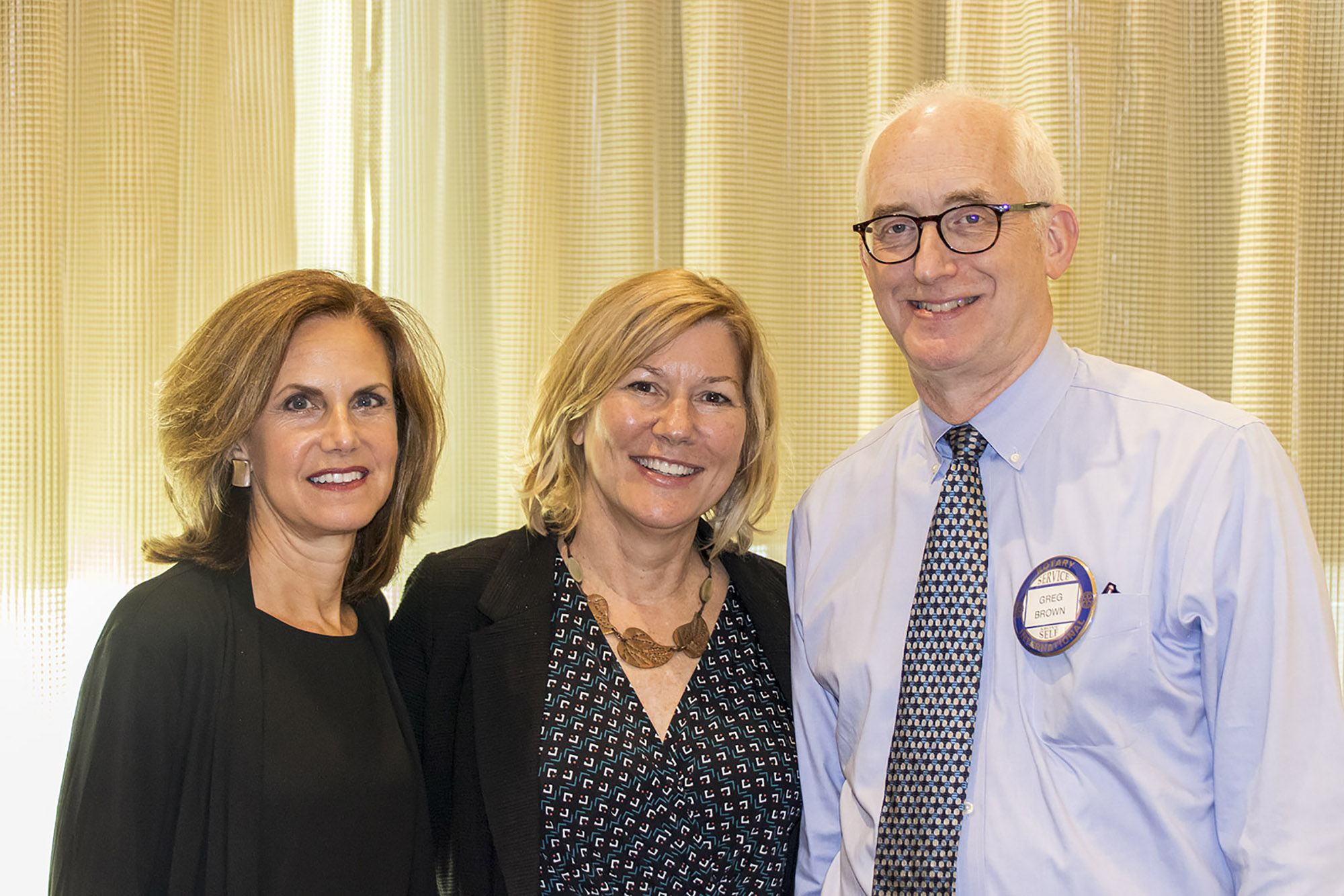Swarthmore 2030 Task Force Takes Next Step in Downtown Strategic Plan
Task Force members Beth Murray, Sharon Mester, and Greg Brown presented the 2030 report to the Rotary Club of Swarthmore at its August 22 meeting. Photo by Gudmund Iversen.
Late in August, the Swarthmore 2030 Task Force began a series of presentations to community groups, sharing some promising ideas and key insights which will help guide efforts toward revitalization of the town over the next decade.
The task force presentation, created in conjunction with Philadelphia-based urban planning firm U3 Advisors, provides a set of recommendations for the revitalization of Swarthmore Town Center. The report was developed as a result of 18 months of visioning work conducted in the community and a comprehensive market assessment created by U3.
Focusing on retail, housing, and vibrancy, U3 analyzed demographic data, population trends, ESRI Business Analysis, and best practices of nearby college towns. Some key conclusions were:
The town center could support demand for at least an additional 15,000 square feet of retail, beyond the 34,000 square feet available now, including eating and drinking establishments.
New eating and drinking establishments should obtain liquor licenses, since 20 to 30 percent of restaurant sales come from alcoholic beverages.
A retail strategy would help attract and retain destination retailers and improve underperforming commercial corridors. Destination retail should be attractive, differentiated, and appeal to the Swarthmore College community, borough residents, and visitors to Swarthmore.
There is a potential housing demand for up to 80 new multi-family or townhome style units and 100 new active adult units in town. Focus group surveys from last year revealed Swarthmoreans desire high quality, accessible housing in close proximity of town center. Additional housing in the town center will increase demand for retail and eating and drinking establishments.
Downtown property owners have an opportunity to consider future redevelopment of their properties to meet the changing needs of the community since Swarthmore’s current zoning regulations allow for mixed-use development and permit a greater building height.
Collaborating with Swarthmore College would help facilitate vibrancy recommendations, such as campus shuttles to downtown, co-working spaces, childcare, community Wi-Fi, and reinventing public spaces with pop-ups and events. Swarthmore College was already considering ideas such as expanding meal plan for employees, extending campus shuttles to downtown, and bike sharing.
The Town Center would benefit from a transformation of community spaces and green infrastructure improvements.
The task force is in the process of sharing the report with organizations including Swarthmore’s Senior Citizens Association, Recreation Association, Town Center, Co-op, Planning Commission, Rotary Club, Centennial Foundation, Library, Historical Society, Farmer’s Market, and others. Then begins the crucial work of developing and implementing a strategic plan for the Swarthmore Town Center’s path from today to 2030, based on the analysis and recommendations of the report.




